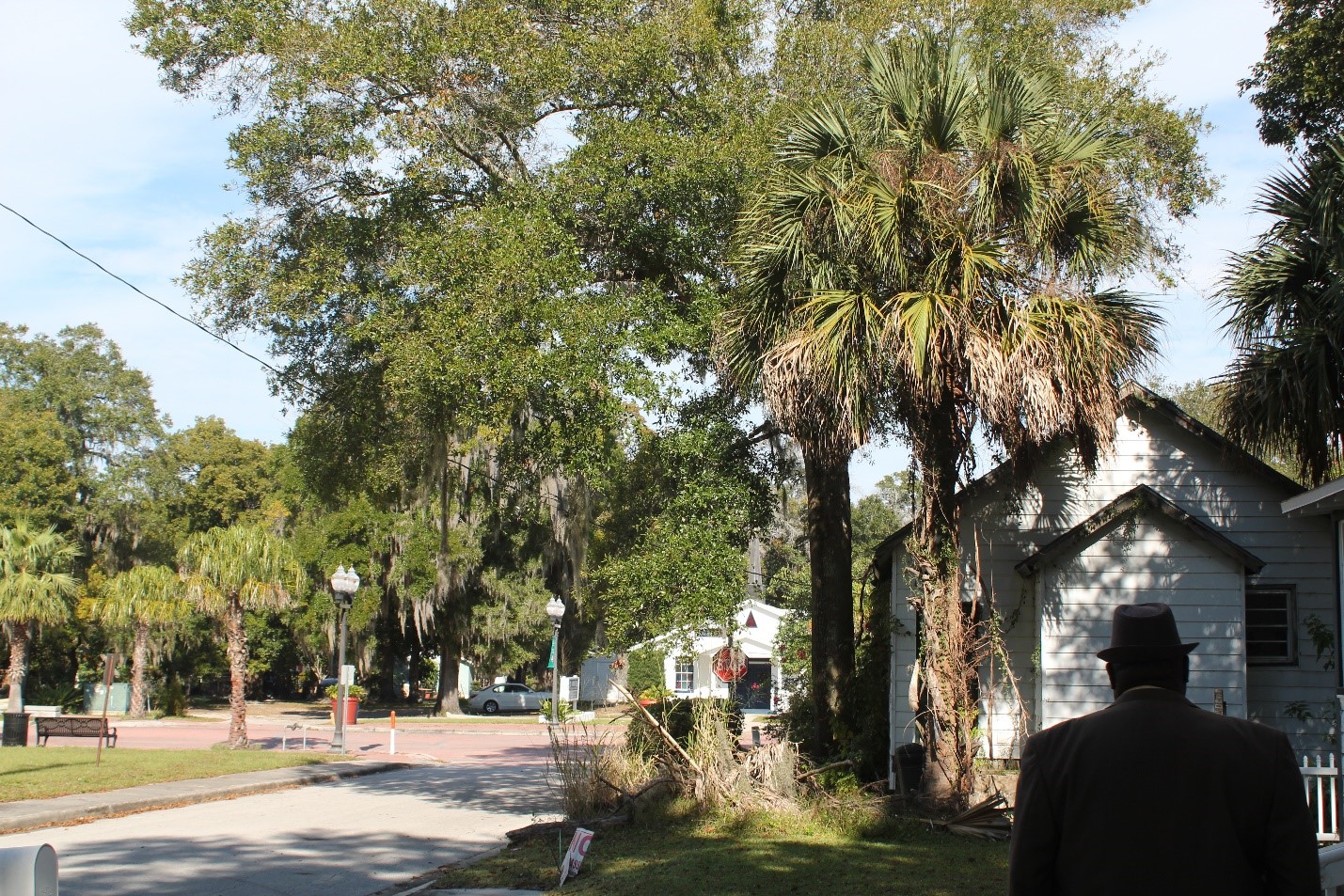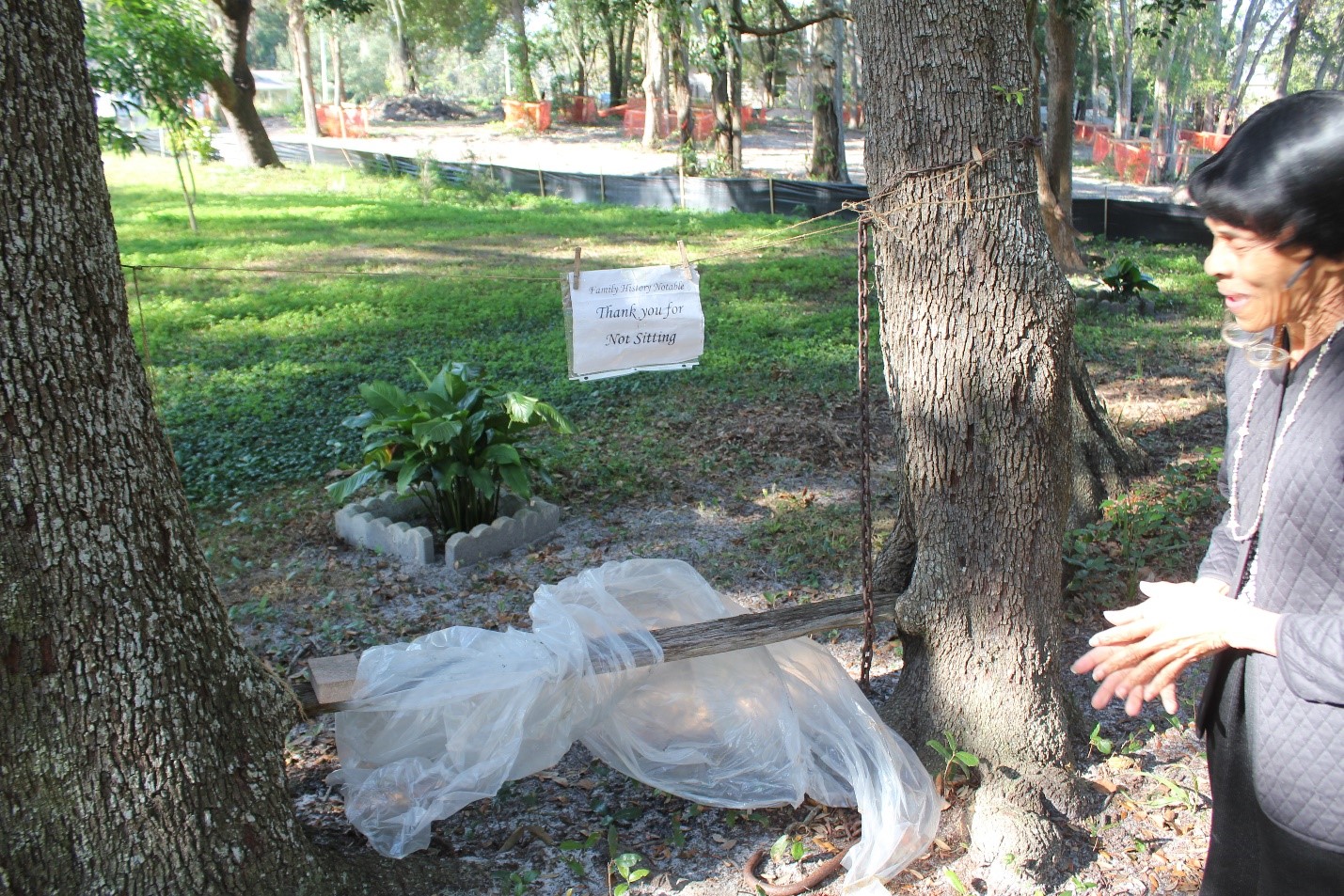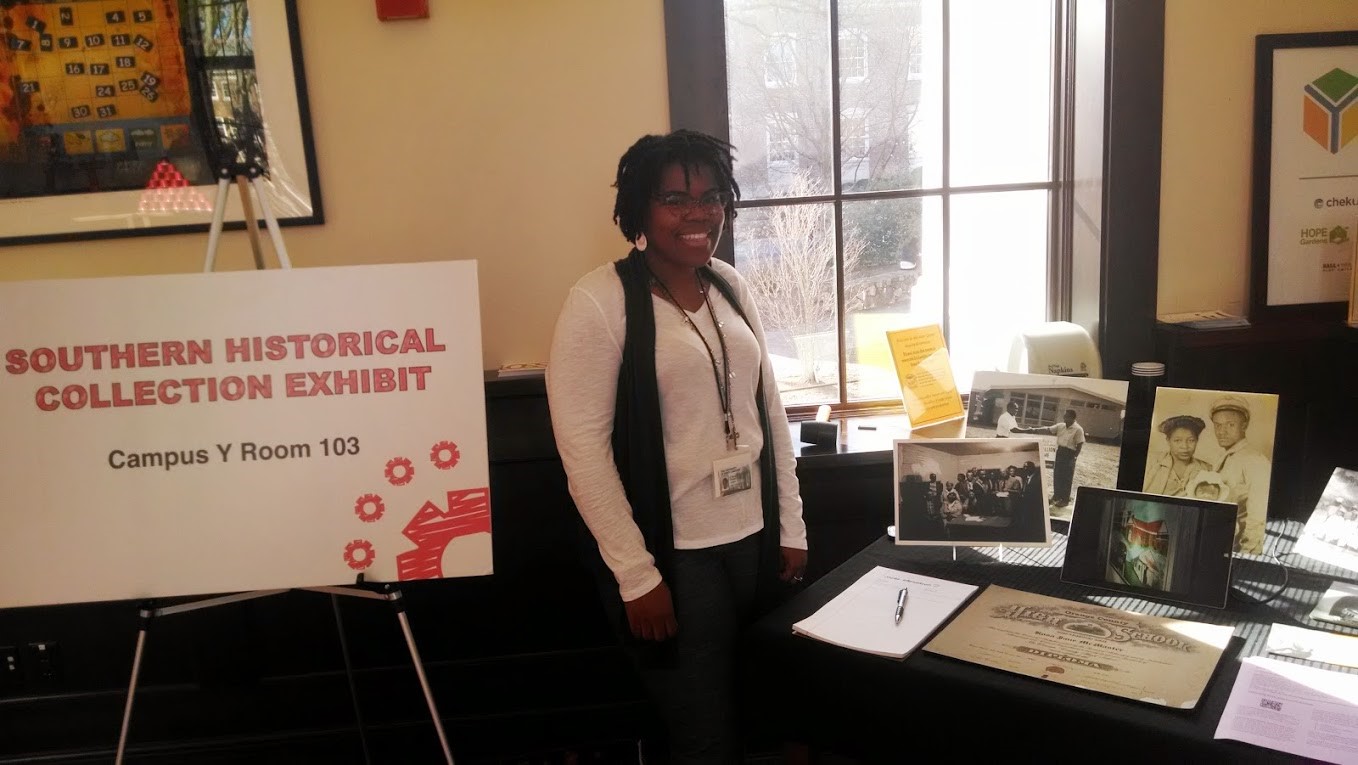Contributed by Bryan Giemza, Director of the Southern Historical Collection
As part of the Collection’s ongoing work with the Historic Black Towns and Settlements Alliance, I visited the historic town of Eatonville, Florida in December. In recent days the town commemorated the legacy of one of its notable residents, as the Zora! Festival celebrated the life and work of writer Zora Neale Hurston. Professor William Ferris delivered a keynote address there, and attendees had the opportunity to soak up some of the atmosphere and remarkable local culture of a town that has retained its distinctiveness through the years.
A 2008 New York Times article gives a sense of the town and its atmosphere; I had a chance to visit some of the places and people it mentions. Stepping into Eatonville is transporting. Against all expectation, with the suburbs of Orlando at its doorstep and the interstate visible from the town center, Eatonville has survived the fragmentation common to many small southern towns. If Eatonville retains a small-town atmosphere, it is also mindful of deep history. Town residents told me of the sacrifices entailed in protecting those legacies; where they have succeeded, one said, is because the townspeople “have a backbone.” Eatonville is permeated with a sense of the importance of history as well as its fragility.

From the first, Mayor Bruce Mount and his staff were gracious hosts. Mrs. Maye St. Julien shared insights into town history and her life story was fascinating in its own right. The City Hall houses many artefacts and keeps the minutes of its meetings, dating back to the mid-twentieth century (many earlier records were lost to a fire). We were warmly received by Ms. Hortense Jones of St. Lawrence A.M.E., who opened the chapel, its walls brightened by the J. Andre Smith murals that incorporate scenes from local life. The paintings offer a kind of primer to fire a child’s imagination, with inscriptions such as “And when I am thirsty He brings me a bowl/Of life-giving water to sweeten my soul.”

From the standpoint of historic preservation, there is much to sweeten the soul in Eatonville. I viewed the guest book of the Household of Ruth, and saw on its pages many names familiar from Zora Neale Hurston’s life and her writing. We enjoyed lunch at the restaurant owned by former mayor Abraham Gordon, Jr., and toured the Moseley House, which brims with period artefacts that reflect the careful stewardship of Hurston’s own Zeta Phi Beta sorority. Later we toured the school on the grounds of the Hungerford Institute, now closed, and gleaned a sense of its importance to the community. At various times during the day I benefitted from the archival perspective and generosity of Mrs. N.Y. Nathiri, and was privileged to meet her mother, Ms. Ella Dinkins, who at ninety-seven years of age remembered town history with unfailing clarity.

The day came to a fitting and memorably powerful end with a chance to walk the grounds around Mrs. Louise Franklin’s home. With a catch in his voice, her son explained how the family had held that had been purchased against all odds. It had long served as an oasis for black life—social gatherings, picnics, campouts, baptisms, community fellowship—in spite of segregation’s long grind. This history was made tangible, for example, in the lanyards that dangle where lanterns once glowed from tree branches, and in the planks that had served as simple benches, now overgrown by the trees. Seeing and touching that history made it real to him (and to me), and brought home the importance of conserving it.

The visit was also a reminder of how fortunate the Southern Historical Collection is to work in partnership with communities that are using their unique heritage to support campaigns of renovation and preservation, as the HBTSA charter states, “such that those who follow will have the ability to assume active stewardship to understand, interpret and appreciate these historic places through the lenses of their inhabitants.” These projects require the talents of community members, students, and future archivists, and so we were grateful to have a chance to tell others about the work of HBTSA at a breakout session during the recent TEDx UNC conference. My good colleague Chaitra Powell and I shared information with attendees about the Historic Black Towns and Settlements Alliance (HBTSA), the summer fellowships in the towns sponsored by UNC’s Center for the Study of the American South, and the forthcoming ThatCamp Community Archives conference at UNC. We hope that the conference will contribute to the energy and creativity surrounding HBTSA and serve other communities as well.


My name is Edward H. Greene. I, and my son Edward A. Greene, are the only two people related to both, Joe Clarke and Zora Neale Hurston. Joe Clarke was my Great-great Uncle on my Father’s side of my family. My Great -grandmother, Pinky Potts was Zora Neale Hurston’s first cousin on my Mother’s side of my family. I was also in the last graduating class of Hungerford High School with Hortense Jones.